Predictions & Data for this entry
| Model: std | climate: Cfa, Cfb, Dfa, Dfb, Dfc | migrate: | phylum: |
| COMPLETE = 6.0 | ecozone: TH, TPa | food: biPp, biD | class: |
| MRE = 0.194 | habitat: 0iFp, 0iFl, 0iFm | gender: D | order: |
| SMSE = 0.135 | embryo: Fbf | reprod: Apf | family: |
Zero-variate data
| Data | Observed | Predicted | (RE) | Unit | Description | Reference |
|---|---|---|---|---|---|---|
| ab | 1 | 0.6206 | (0.3794) | d | age at birth | MacABail1929 |
| am | 45 | 43.65 | (0.02993) | d | life span | MacABail1929 |
| Lb | 0.1 | 0.09765 | (0.02348) | cm | total length at birth | PreuHamm2009 |
| Lp | 0.25 | 0.2626 | (0.05025) | cm | total length at puberty | Kooy2010 |
| Wd0 | 8.2 | 7.277 | (0.1126) | mug | initial dry weight | Elen1989 |
| Wdb | 6.6 | 4.51 | (0.3166) | mug | dry weight at birth | Elen1989 |
| Wd37 | 600 | 245.3 | (0.5911) | mug | dry weight at L = 3.7 mm | Elen1989 |
Uni- and bivariate data
| Data | Figure | Independent variable | Dependent variable | (RE) | Reference |
|---|---|---|---|---|---|
| tL_f | 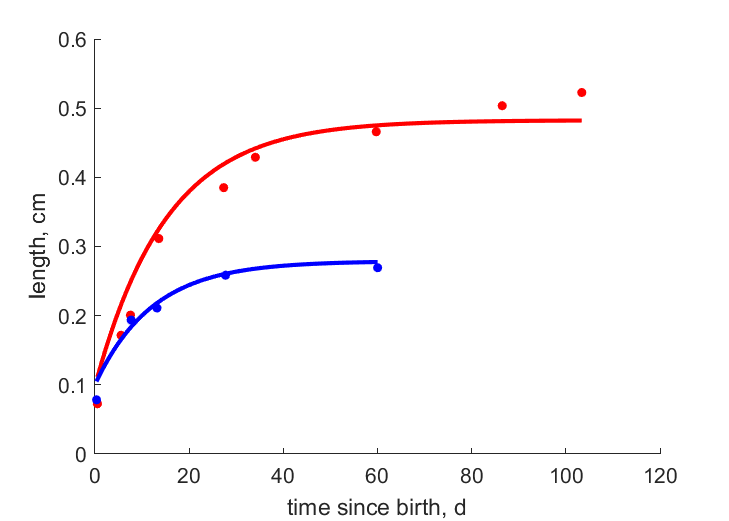  | time since birth | length | (0.08607) | MacABail1929 |
| tL_m |   | time since birth | length | (0.05331) | MacABail1929 |
| tS_f | 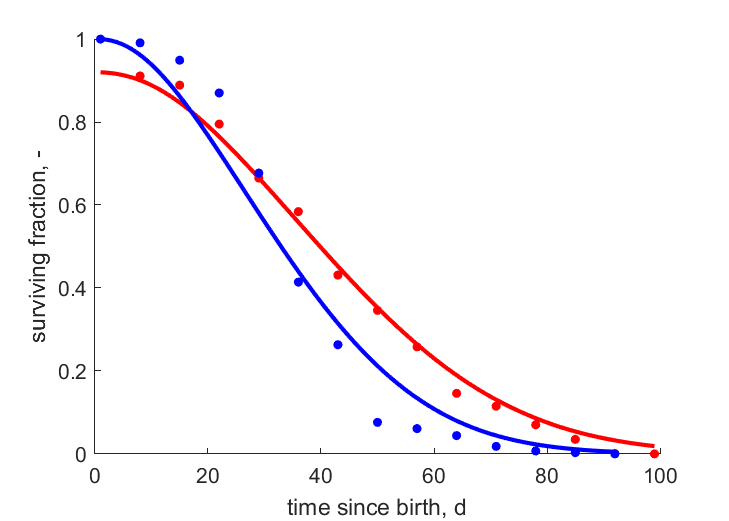 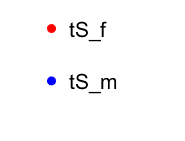 | time since birth | surviving fraction | (0.05955) | MacABail1929 |
| tS_m |   | time since birth | surviving fraction | (0.1859) | MacABail1929 |
| tL1 | 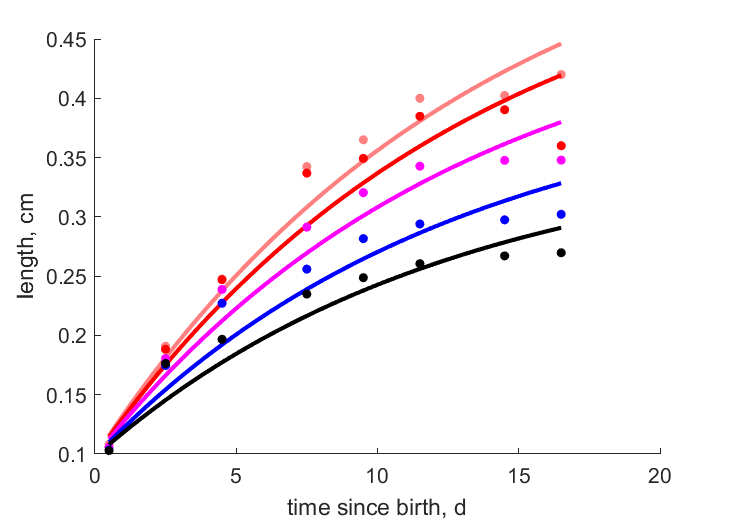 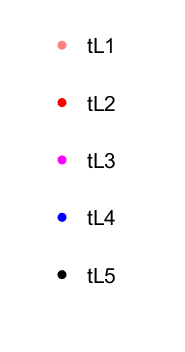 | time since birth | length | (0.0586) | EverKooy1989 |
| tL2 |   | time since birth | length | (0.08433) | EverKooy1989 |
| tL3 |   | time since birth | length | (0.0688) | EverKooy1989 |
| tL4 |   | time since birth | length | (0.07532) | EverKooy1989 |
| tL5 |   | time since birth | length | (0.06933) | EverKooy1989 |
| tGlyc | 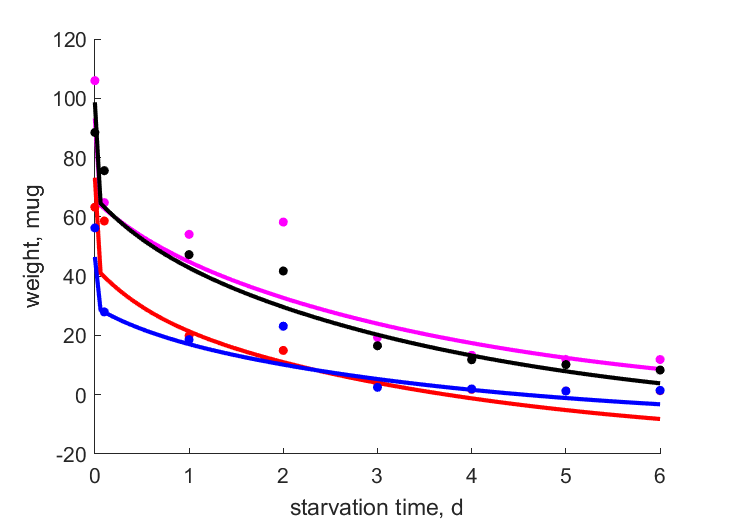 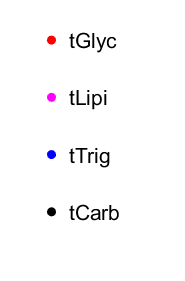 | starvation time | weight | (0.2892) | Elen1989 |
| tLipi |   | starvation time | weight | (0.2569) | Elen1989 |
| tTrig |   | starvation time | weight | (0.3927) | Elen1989 |
| tCarb |   | starvation time | weight | (0.2009) | Elen1989 |
| LJO_extra |   | length | O2 consumption | (0.08652) | EverKooy1989 |
| LJO |   | length | O2 consumption | (0.5522) | EverKooy1989 |
| tL_SK1 | 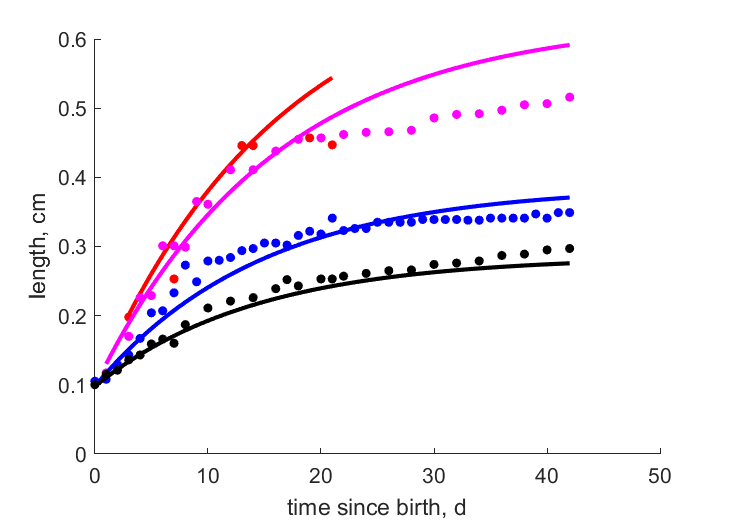 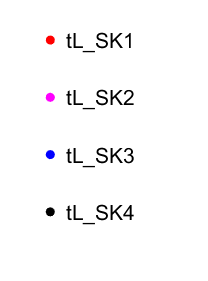 | time since birth | length | (0.1075) | PreuHamm2009 |
| tL_SK2 |   | time since birth | length | (0.09787) | PreuHamm2009 |
| tL_SK3 |   | time since birth | length | (0.05526) | PreuHamm2009 |
| tL_SK4 |   | time since birth | length | (0.04861) | PreuHamm2009 |
| tN_SK1 |  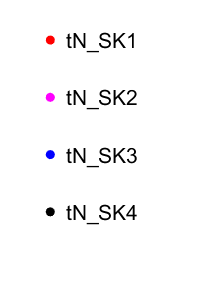 | time since birth | cumulative # of eggs | (0.1035) | PreuHamm2009 |
| tN_SK2 |   | time since birth | cumulative # of eggs | (0.0913) | PreuHamm2009 |
| tN_SK3 |   | time since birth | cumulative # of eggs | (0.4458) | PreuHamm2009 |
| tN_SK4 |   | time since birth | cumulative # of eggs | (0.4595) | PreuHamm2009 |
| tL_C1 | 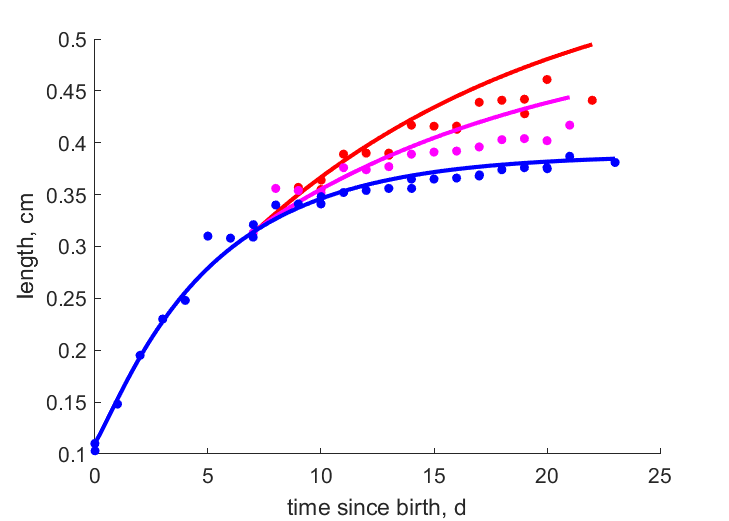 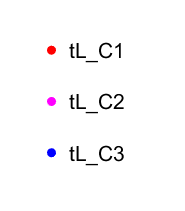 | time since birth | length | (0.04904) | CoorHammRatt2004 |
| tL_C2 |   | time since birth | length | (0.04301) | CoorHammRatt2004 |
| tL_C3 |   | time since birth | length | (0.02102) | CoorHammRatt2004 |
| tN_C1 | 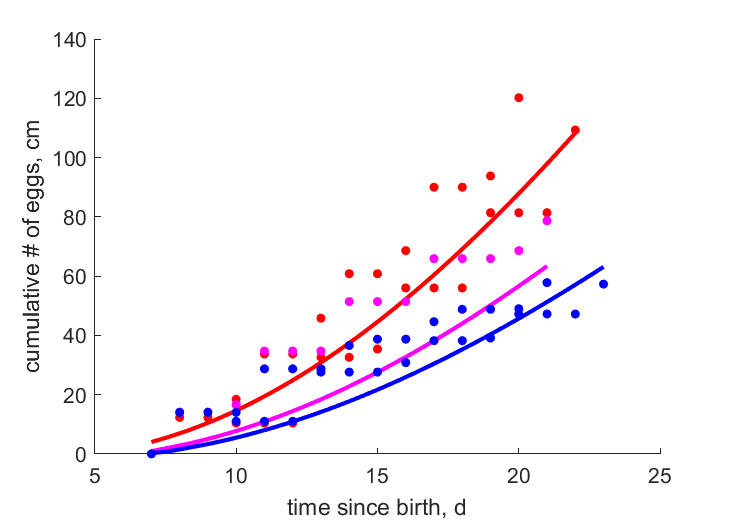 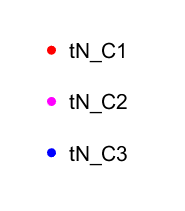 | time since birth | cumulative # of eggs | (0.215) | CoorHammRatt2004 |
| tN_C2 |   | time since birth | cumulative # of eggs | (0.3824) | CoorHammRatt2004 |
| tN_C3 |   | time since birth | cumulative # of eggs | (0.2821) | CoorHammRatt2004 |
| LDw | 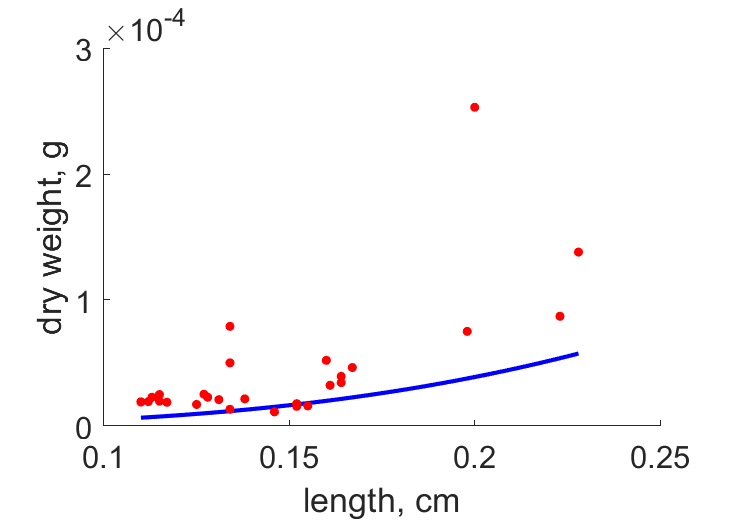 | length | dry weight | (0.6016) | GergPreu2014 |
| LDwA |  | length | dry weight | (0.2387) | GergPreu2014 |
| LFx | 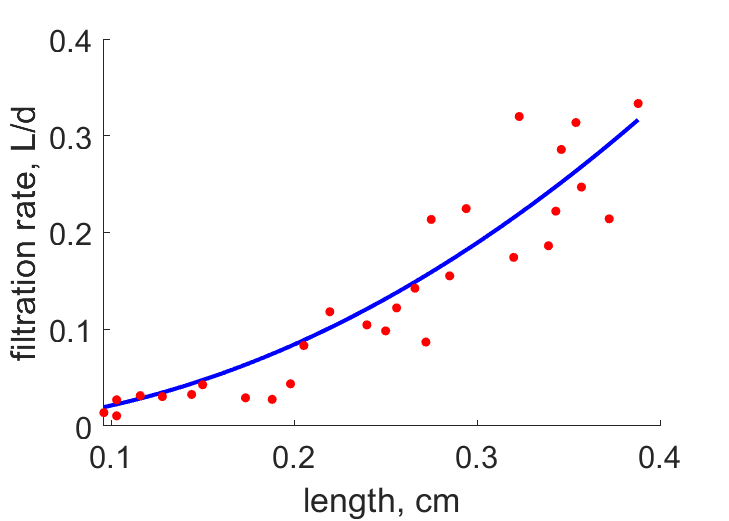 | length | filtration rate | (0.2198) | PreuHamm2009 |
| LpX | 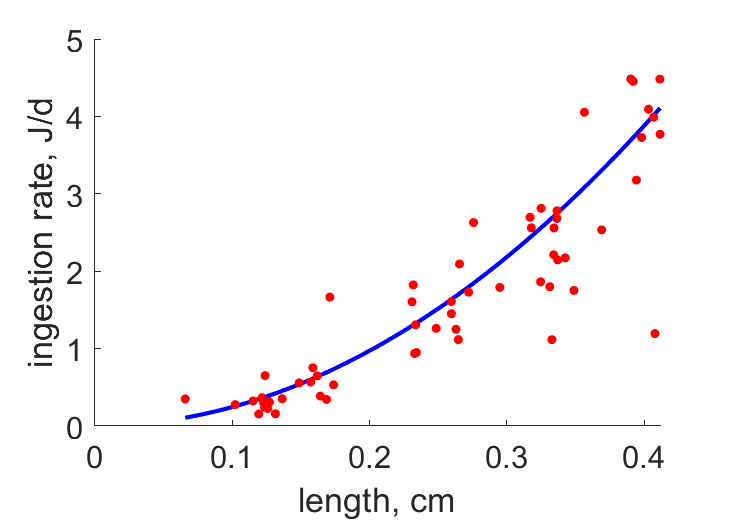 | length | ingestion rate | (0.2289) | EverKooy1989 |
| Tab | 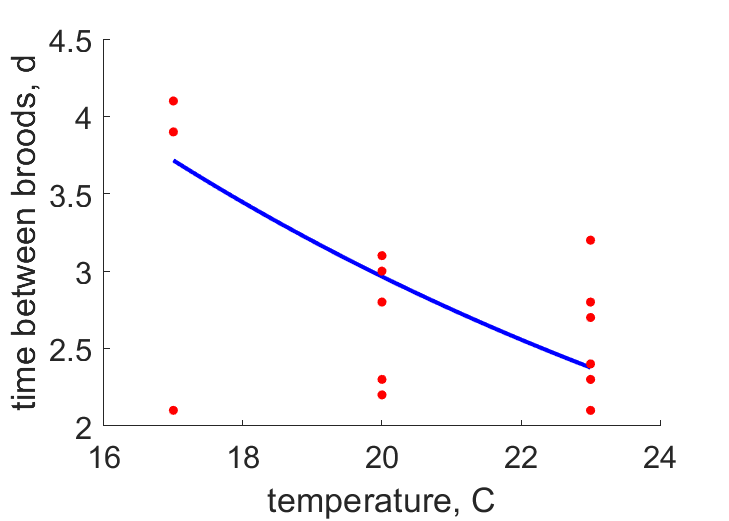 | temperature | time between broods | (0.1332) | StepWatt1984 |
| Tap | 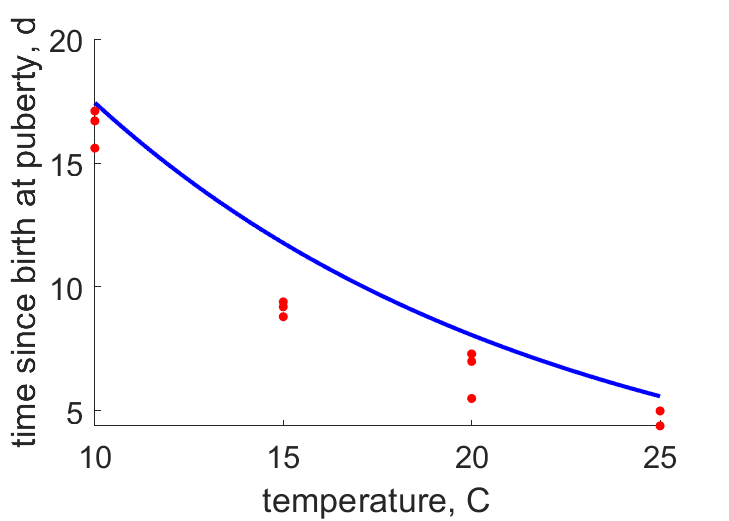 | temperature | time since birth at puberty | (0.1603) | Duel1988 |
| tN | 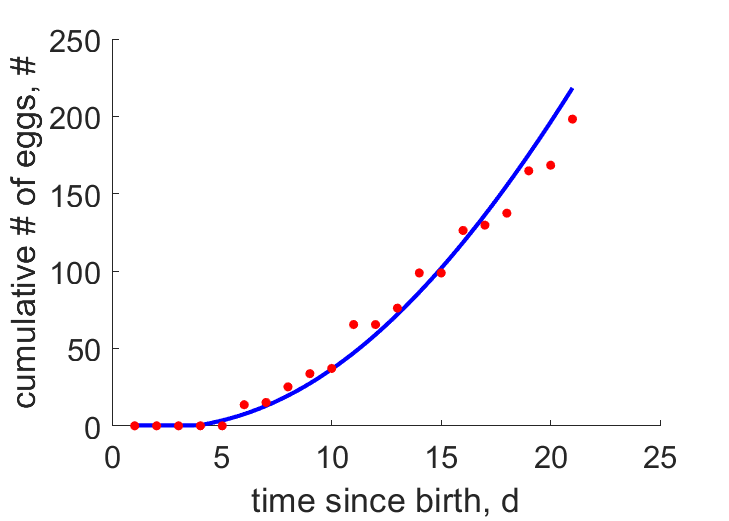 | time since birth | cumulative # of eggs | (0.141) | KooyBeda1996 |
| tProt | 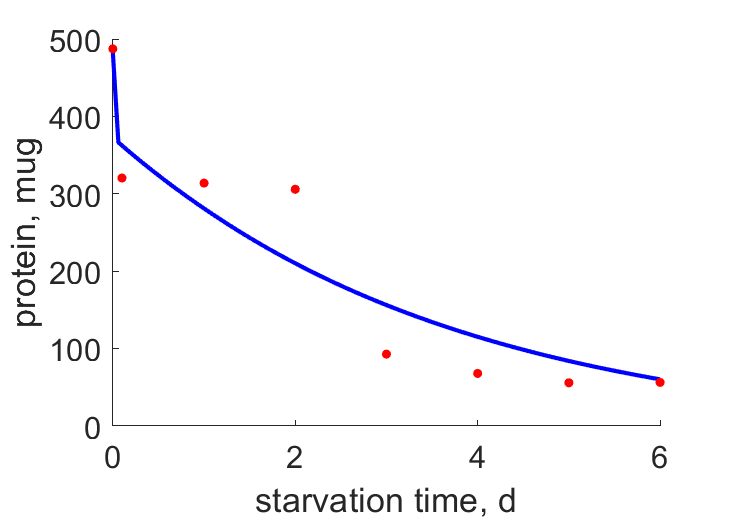 | starvation time | protein | (0.2553) | Elen1989 |
| tS | 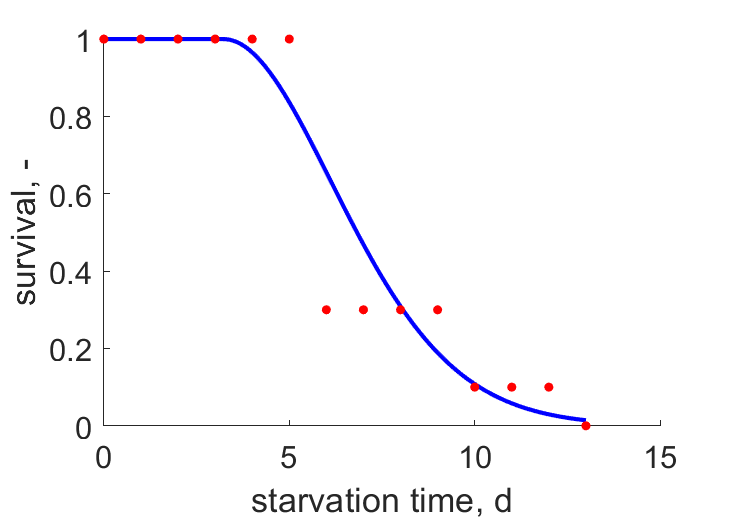 | starvation time | survival | (0.1303) | PreuHamm2009 |
| tWd | 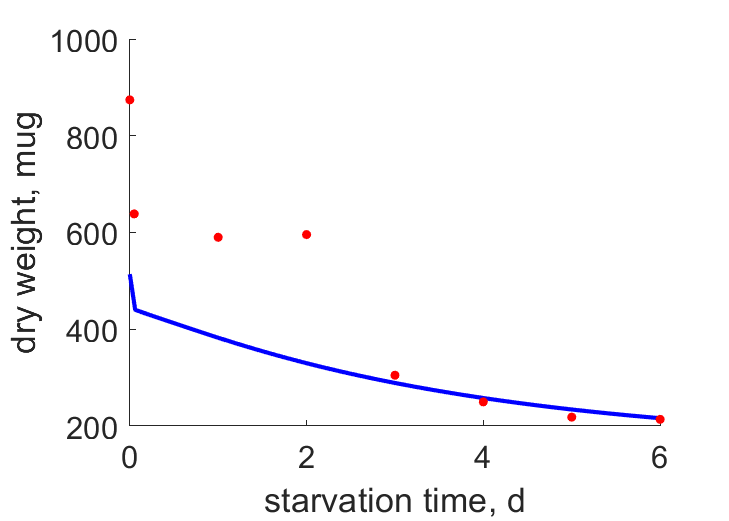 | starvation time | dry weight | (0.2726) | Elen1989 |
| xf | 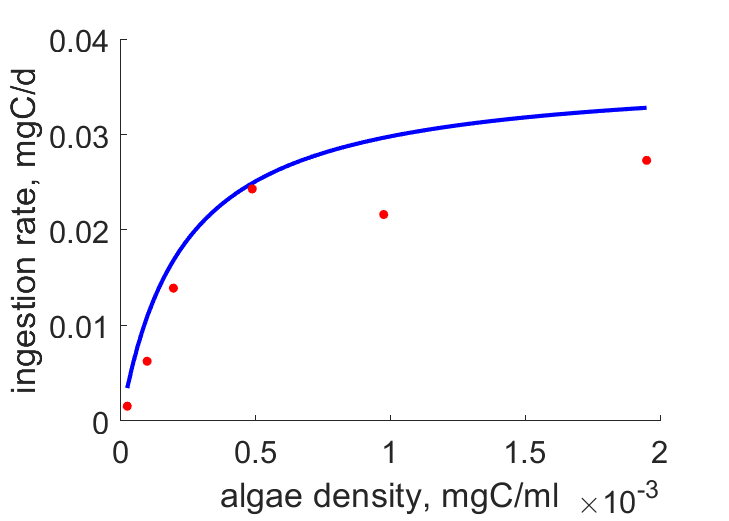 | algae density | ingestion rate | (0.2487) | GergPreu2014 |
Pseudo-data at Tref = 20°C
| Data | Generalised animal | Daphnia magna | Unit | Description |
|---|---|---|---|---|
| v | 0.02 | 0.1858 | cm/d | energy conductance |
| p_M | 18 | 1200 | J/d.cm^3 | vol-spec som maint |
| k_J | 0.002 | 0.2537 | 1/d | maturity maint rate coefficient |
| k | 0.3 | 0.9302 | - | maintenance ratio |
| kap | 0.8 | 0.5809 | - | allocation fraction to soma |
| kap_G | 0.8 | 0.9034 | - | growth efficiency |
| kap_R | 0.95 | 0.95 | - | reproduction efficiency |
Discussion
- Males are assumed to differ from females by {p_Am} and s_G only
- The survival data tS_f for females are assumed to have a background hazard rate of
- mod_3: Female daphnids are assumed to change kappa in response to conditions of low food availability, for a detailed discussion see GergPreu2014
- mod_3: Daphnids are assumed to increase their filtration rate at prolonged conditons of low food availablity (see Lampert W. Limnol. Oceanogr., 39(5), 1994,997-1006)
- mod_3:Laboratory expariments with daphnids are frequently done using a constant amount of food added e.g. on a daily absis, while the ingestion rate increases as the daphnid grows. This experiemtnal design might result in limited food condition later in the experiments and is not accounted for by the assumption of a constant value for the scaled functional response.
- mod_4: males have equal state variables at b, compared to females
Facts
- This entry is discussed in Kooy2010 (Ref: Kooy2010)
Bibliography